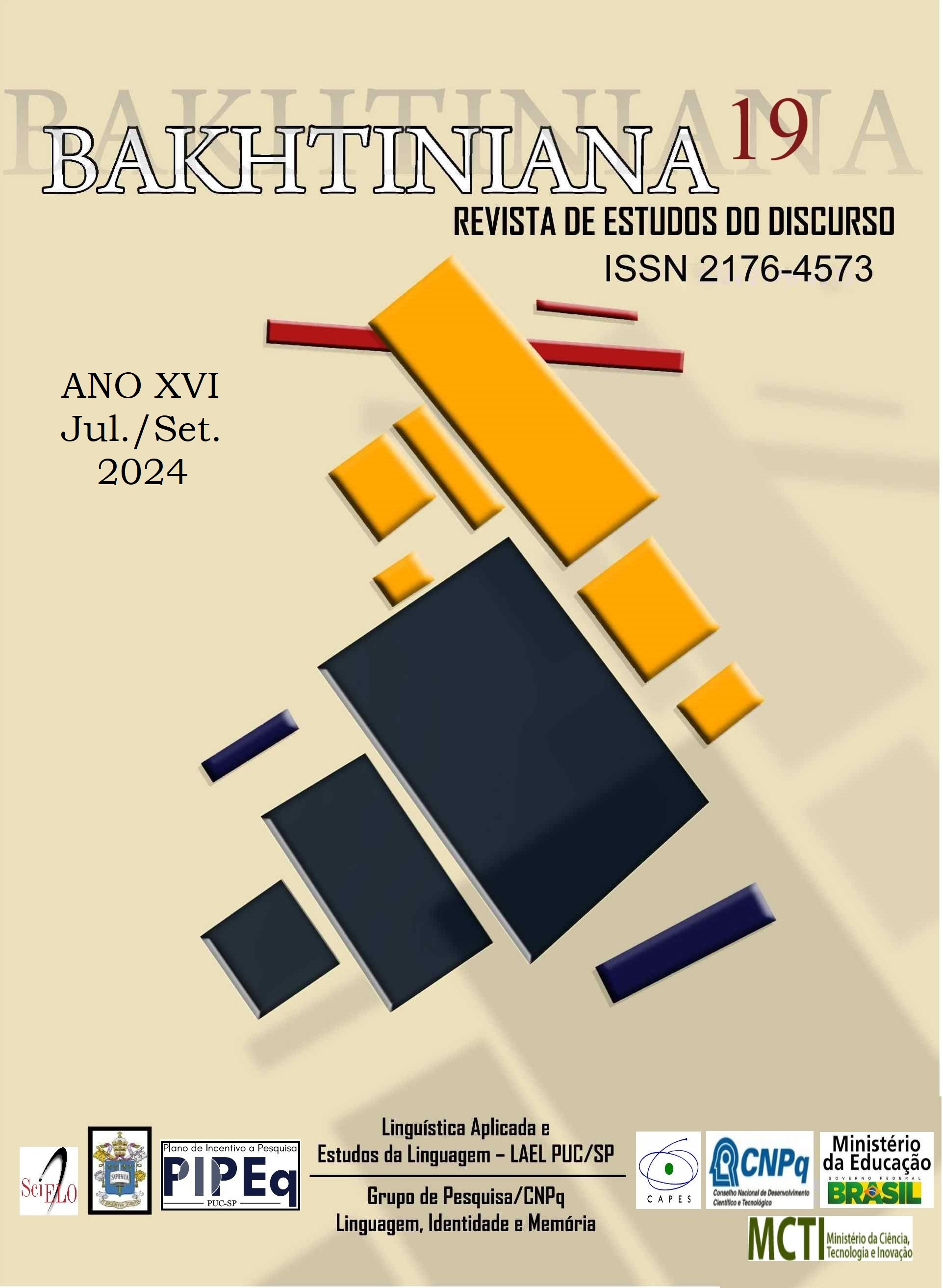Realidade virtual, literatura e educação: narrativas imersivas para crianças e jovens
Palavras-chave:
Literatura infantojuvenil, Realidade virtual cinematográfica, Pistas diegéticas, Narrativa digital, Ambientes imersivosResumo
Neste artigo, trazemos uma reflexão sobre o potencial das tecnologias de Realidade Virtual (RV) para a criação e a adaptação de histórias destinadas ao público infantil e adolescente, focando nas particularidades de seus protocolos de uso. Iniciamos apresentando as narrativas em RV e sua relação com o campo da literatura infantojuvenil. Logo, são apresentados os vídeos em 360º endereçados a crianças e jovens, bem como os protocolos de leitura e engajamento que emergem de suas particularidades. Partindo do campo da Realidade Virtual Cinematográfica (RVC), discutimos os principais desafios impostos por essa mídia para a fruição de obras imersivas, baseados na análise da obra Invasion!, produzida pelo estúdio Baobab. No contexto da obra analisada, concluímos que tanto a produção quanto a recepção de narrativas em RV pressupõem um gerenciamento da visão e do foco atencional dos observadores, considerando os protocolos de leitura já apreendidos e naturalizados através de outras mídias.
Referências
BINDMAN, Samantha et al. Am I a Bunny? The Impact of High and Low Immersion Platforms and Viewers’ Perceptions of Role on Presence, Narrative Engagement, and Empathy during an Animated 360° Video. Proceedings of the 2018 CHI Conference on Human Factors in Computing Systems - CHI ’18. In: THE 2018 CHI CONFERENCE. Montreal QC, Canada: ACM Press, 2018. Disponível em: http://dl.acm.org/citation.cfm?doid=3173574.3174031. Acesso em: 10 abr. 2020.
BOLTER, Jay David; ENGBERG, Maria; MACINTYRE, Blair. Reality Media: Augmented and Virtual Reality. Cambridge, MA: MIT Press, 2021.
CHARNAY, Thierry. Les désastreuses aventures pédagogiques des schémas narratifs. Revista de Literatura Comparada Infantil y Juvenil. Investigación en Educación 4, p. 102-114, 2019. Disponível em: https://dialnet.unirioja.es/servlet/articulo?codigo=7717163. Acesso em: 19 out. 2023.
CHARTIER, Roger. Do livro à leitura. In: CHARTIER, Roger (org). Práticas da leitura. Tradução de Cristiane Nascimento. Introdução de Alcir Pécora. 5ª ed. São Paulo: Estação Liberdade, 2011. p. 77-106.
COOVER, Robert. Cave Writing: Noves aventures a Mot-Town Diumenge 19, 12.00h. Palestra apresentada no KOSMOPOLIS. Festa Internacional de la Literatura del 14 al 19 de setembre de 2004 Barcelona – CCCB. Disponível em: http://www.cccb.org/rcs_gene/robert_coover.pdf. Acesso em: 06 mai. 2023.
DOOLEY, Kath. Cinematic Virtual Reality: A Critical Study of 21st Century Approaches and Practices. California: Palgrave Macmillan, 2021.
GENETTE, Gerard. Figuras III. Tradução de Carlos Manzano. Barcelona: Editorial Lúmen, 1989.
HENRIKSON, Rorik. et al. Multi-Device Storyboards for Cinematic Narratives in VR. Proceedings of the 29th Annual Symposium on User Interface Software and Technology - UIST ’16. In: The 29th Annual Symposium. Tokyo, Japan: ACM Press, 2016. Disponível em: http://dl.acm.org/citation.cfm?doid=2984511.2984539. Acesso em: 5 mar. 2020.
HUTCHEON, Linda. A Theory of Adaptation. New York; London: Routledge, 2006.
INVASION! Eric Darnell. Estados Unidos: Baobab Studio, 2016. Digital/Online (6 minutos).
KURWINKEL, Tobias. Picturebooks and Movies. In: KÜMMERLING-MEIBAUER, Bettina. The Routledge Companion to Picturebooks. Nova York; Londres: Routlegde, 2018, p. 325-335.
LARIVAILLE, Paul. L’analyse (morpho) logique du récit. Poétique, n. 19, p. 128, set. 1974.
LARIVAILLE, Paul; GENOT, Gerard. Style narratif, Rhétorique, Tradition sur le Novellino. Revue Romane, v. 19, n. 2, 1984.
MATEER, John. Directing for Cinematic Virtual Reality: How the Traditional Film Director’s Craft Applies to Immersive Environments and Notions of Presence. Journal of Media Practice, v. 18, n. 1, p. 14-25, 2017. DOI: https://www.tandfonline.com/doi/abs/10.1080/14682753.2017.1305838. Acesso em: 30 abr. 2019.
MURRAY, Janet H. Hamlet on the Holodeck: The Future of Narrative in Cyberspace. New York: The Free Press, 2016.
NICOLAE, Dana Florentina. Spectators’ Experience of 2D Film versus Virtual Reality Cinematic Film. International Journal on Stereo & Immersive Media, v. 2, n. 1, p. 78 87, 2018. Disponível em: https://revistas.ulusofona.pt/index.php/stereo/article/view/6633/4015. Acesso em: 16 mar. 2020.
NIELSEN, Lasse et al. Missing the Point: An Exploration of How to Guide Users’ Attention during Cinematic Virtual Reality. Proceedings of the 22nd ACM Conference on Virtual Reality Software and Technology. Anais [...] In: VRST ’16: 22TH ACM SYMPOSIUM ON VIRTUAL REALITY SOFTWARE AND TECHNOLOGY. Munich Germany: ACM, 2 nov. 2016. Disponível em: https://dl.acm.org/doi/10.1145/2993369.2993405. Acesso em: 18 fev. 2022.
PENG, Cheng; XIAOTONG, Liang. Analysis of Artistic Language in the Virtual Reality Design. Proceedings of the International Conference on Video and Image Processing. Anais [...] In: ICVIP 2017: INTERNATIONAL CONFERENCE ON VIDEO AND IMAGE PROCESSING. Singapore: ACM, 27 dez. 2017. Disponível em: https://dl.acm.org/doi/10.1145/3177404.3177446. Acesso em: 16 mar. 2020.
TELLES, Luís Fernando Prado. A narrativa que vende: a narrativa como mercadoria e como propaganda. Letras, Santa Maria, v. 26, n. 53, p. 13-43, jul./dez. 2016. DOI: https://doi.org/10.5902/2176148525075. Acesso em: 06 mai. 2023.
THOMPSON, John B. Book Wars: The Digital Revolution in Publishing. Medford: Polity Press, 2021.
TYDECKS, Johanna. Picturebooks and Adaptations of World Literature. In: KÜMMERLING-MEIBAUER, Bettina. The Routledge Companion to Picturebooks. Nova York; Londres: Routlegde, 2018. p. 485-494.
Downloads
Publicado
Como Citar
Edição
Seção
Licença
Copyright (c) 2024 Bakhtiniana. Revista de Estudos do Discurso

Este trabalho está licenciado sob uma licença Creative Commons Attribution 4.0 International License. Os autores concedem à revista todos os direitos autorais referentes aos trabalhos publicados. Os conceitos emitidos em artigos assinados são de absoluta e exclusiva responsabilidade de seus autores.








